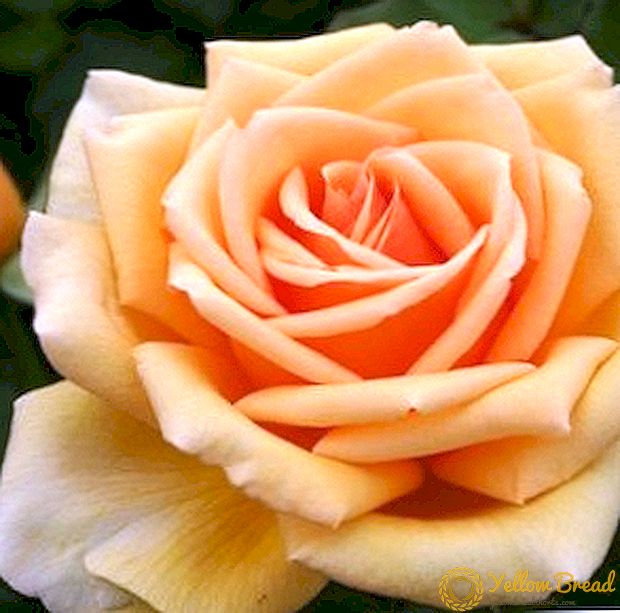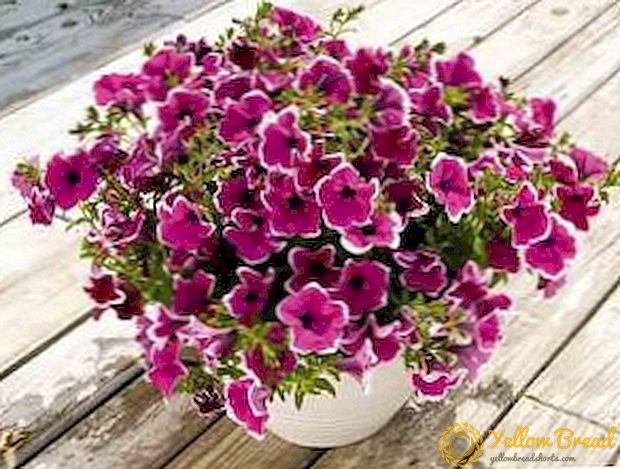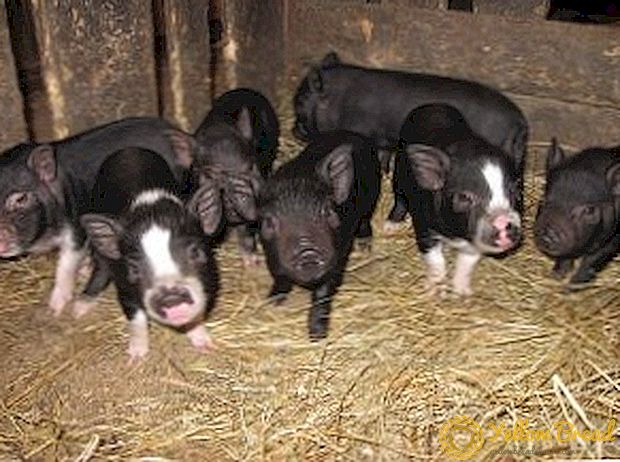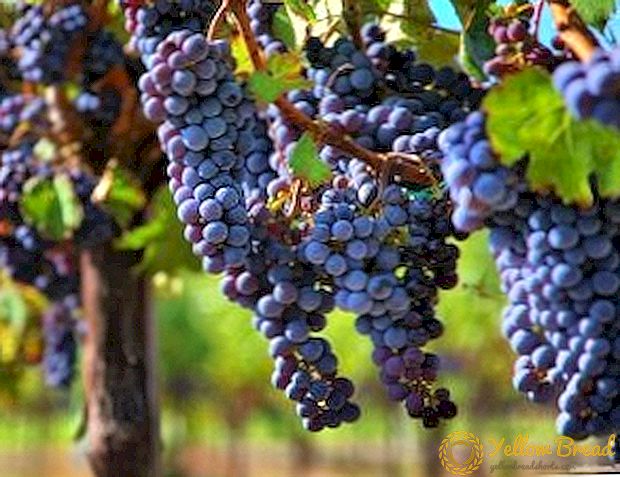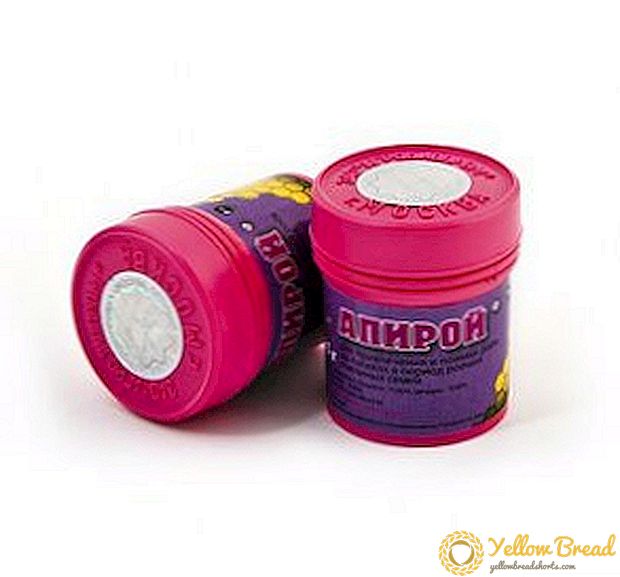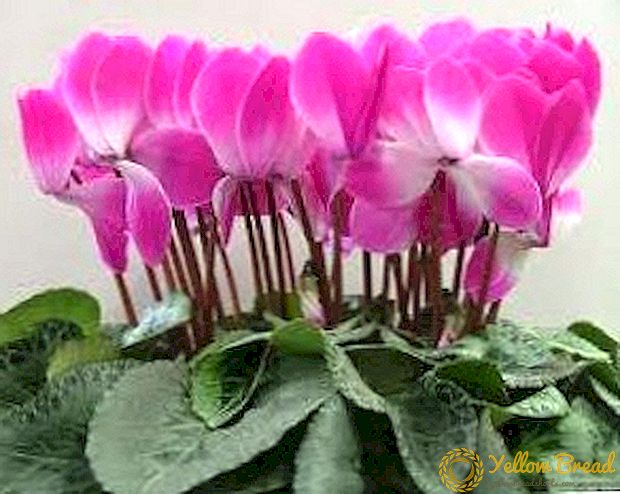 Melissa is known for its medicinal properties since ancient times. Preparations based on this plant (powders, dried leaves, oils) are widely used in folk and traditional medicine. The article describes the main varieties of lemon balm curative, their features, useful characteristics and spheres of use.
Melissa is known for its medicinal properties since ancient times. Preparations based on this plant (powders, dried leaves, oils) are widely used in folk and traditional medicine. The article describes the main varieties of lemon balm curative, their features, useful characteristics and spheres of use.
- Melissa Pearl
- Melissa Isidora
- Melissa Quadrille
- Melissa Lemon Flavor
- Melissa Tsaritsynskaya Semko
- Melissa Pure Gold
- Melissa Golden
- Melissa Dozha
Melissa Pearl
Melissa is a perennial plant and has many species. Pearl - one of the popular representatives of melissa medicinal. It has a pronounced aroma with a lemon note and spicy taste with bitterness. In height can reach up to 70 cm. The leaves are green, oval-shaped, toothed at the edges. Greens can be cut in the second year after planting. During the season, it is necessary to cut the leaves together with the stems at least twice.
 At one place lemon balm can be grown up to 5 years, then you should change the location of the plant. The period from the time of regrowth to the ability to cut the leaves is two months. The yield of the variety is very high: from one square meter you can collect up to 5 kg.
At one place lemon balm can be grown up to 5 years, then you should change the location of the plant. The period from the time of regrowth to the ability to cut the leaves is two months. The yield of the variety is very high: from one square meter you can collect up to 5 kg.
Planted can be seedlings or seeds. Seeds are sown in the middle of spring, when the frost will come down. After sowing, the soil should be watered and covered with polyethylene for a week. The period of seed germination is one month. Seedlings are recommended to plant a two-month, it can be done in May-June or early autumn.
Pearl leaves can be used fresh for dressing and decorating salads, for fish, meat, potatoes, as well as adding or decorating pastries, for preparing drinks, flavoring infusions, liqueur. Dried leaves are used for brewing tea and medicinal decoctions. Dry lemon balm in a ventilated shaded place.
Useful characteristics of Melissa Pearl:
- very rich in vitamin C;
- contains carotene, essential oils;
- tones up;
- soothes heart pains;
- reduces shortness of breath;
- soothes intestinal colic;
- acts as a sedative for neurosis, depression.
Melissa Isidora
 In height reaches 80 cm. The leaves are green with a light green tint, oval-shaped, serrated at the edges. Seeds are sown in mid-March, and seedlings in May. Seeds for seedlings are best sown in containers that will be placed indoors, and they can be sown in the ground only if it is well warmed up. Seeds germinate at a temperature not lower than 10 degrees. Planted and growing plants are frost-resistant and winters well in the soil. Place for landing should be well lit, without drafts. Soil overwetting should not be.
In height reaches 80 cm. The leaves are green with a light green tint, oval-shaped, serrated at the edges. Seeds are sown in mid-March, and seedlings in May. Seeds for seedlings are best sown in containers that will be placed indoors, and they can be sown in the ground only if it is well warmed up. Seeds germinate at a temperature not lower than 10 degrees. Planted and growing plants are frost-resistant and winters well in the soil. Place for landing should be well lit, without drafts. Soil overwetting should not be.
The variety is quite fruitful and grows quickly. The leaves are harvested in the second year after planting before and during the flowering period. At one place grows up to 5 years. Dry the billet in a ventilated dark place.
It has pronounced analgesic, sedative properties, is used for colds, cough.
Melissa Quadrille
Perennial. The height reaches 80 cm. The leaves are green, slightly pointed, with teeth on the edges. A moderately moist, loose soil is better suited for this variety. Resistance to frost is average, it freezes out at very low temperatures. At the same time resistant to pests and diseases.The leaves are cut in the second year after planting before or during the flowering period.
 You can plant as seeds and saplings. Blossoms throughout July, August. The plant smells like lemon, it tastes bitter. Can be used in fresh and dried form. Apply in cooking as an additive to fish, meat, salads, potatoes, to decorate baking, flavoring drinks. In the field of medicine use:
You can plant as seeds and saplings. Blossoms throughout July, August. The plant smells like lemon, it tastes bitter. Can be used in fresh and dried form. Apply in cooking as an additive to fish, meat, salads, potatoes, to decorate baking, flavoring drinks. In the field of medicine use:
- as soothing;
- for insomnia;
- for easier breathing in asthma;
- as a laxative;
- to improve sweating;
- with anemia.
Melissa Lemon Flavor
It reaches a meter in height, has a delicate lemon aroma, the taste is bitter and spicy. The leaves are bright green, with small notches on the edges, are heart-shaped. Can be planted with seeds or 70-day seedlings. Seeds are sown in March, the temperature in the room where the material will be contained must be at least 12-15 degrees. Seedlings are planted in May.
 The ripening period is two months. The leaves are cut in the second year after planting before and during the flowering period.It blooms in July and August. Twice a season it is necessary to cut the stems so that the plant grows better.
The ripening period is two months. The leaves are cut in the second year after planting before and during the flowering period.It blooms in July and August. Twice a season it is necessary to cut the stems so that the plant grows better.
You can use lemon balm in fresh or dried form. Fresh leaves are added as a seasoning or decoration to salads, fish, meat, and from dried ones they make medicinal teas, decoctions, powders.
Lemon balm contains a large amount of vitamin C and essential oils that have a pronounced anti-inflammatory and antimicrobial effect. It is used for colds, as a sedative, for disorders of the stomach and intestines, reduces heart pain, eases breathing.
Melissa Tsaritsynskaya Semko
 In height reaches 80 cm. Perennial herb with a pronounced aroma of lemon. At one place grown up to 5 years. The leaves are small, dark green, pointed at the ends, at the edges have cloves. Planted seeds or seedlings. Not very resistant to frost, at low temperatures it must be covered. Leaves and shoots are collected before or during the flowering period.It blooms in the second half of July and in August with small white flowers. Side shoots bottom creeping.
In height reaches 80 cm. Perennial herb with a pronounced aroma of lemon. At one place grown up to 5 years. The leaves are small, dark green, pointed at the ends, at the edges have cloves. Planted seeds or seedlings. Not very resistant to frost, at low temperatures it must be covered. Leaves and shoots are collected before or during the flowering period.It blooms in the second half of July and in August with small white flowers. Side shoots bottom creeping.
Melissa is a perennial herb and can grow for about 10 years. In the care of unpretentious. To ensure active growth should periodically loosen the soil and remove weeds. Two or three times a season, the leaves must be removed along with the shoots. In winter, the variety does not become extinct, the plant is covered in the fall with fallen leaves. Dry in a well-ventilated dark place.
Use in a fresh and dried look, in cookery and medicine. It has diuretic, anti-inflammatory, soothing properties.
Melissa Pure Gold
This variety has very beautiful leaves with a yellowish-golden color. This is an artificially bred variety. Interestingly, the height of the bush is equal to its width and reaches up to half a meter. The leaves are oval-shaped, with notches on the tips. The flowers at the beginning of flowering are white, with time they become purple.
 Melissa of this variety loves warmth and does not tolerate frost.It is better to grow it in containers and take it to the premises for the winter. Does not tolerate direct sunlight. The soil for planting should be loose, moist. In early March, the plant is recommended to fertilize.
Melissa of this variety loves warmth and does not tolerate frost.It is better to grow it in containers and take it to the premises for the winter. Does not tolerate direct sunlight. The soil for planting should be loose, moist. In early March, the plant is recommended to fertilize.
Melissa Pure gold has pronounced antimicrobial and anti-inflammatory properties. Effectively helps with insomnia, disorders of the stomach and intestines, facilitates breathing during shortness of breath.
Melissa Golden
 This variety differs from the rest of the original color of the leaves. Dark green foliage is covered with a golden pattern. The leaflets are small, jagged at the ends. Resistant to pests and diseases, frost-resistant plant. Prefers slightly shaded places, loose soil. Melissa can grow up to 10 years. Every five years it needs to be transplanted to a new place. The principle of planting plants and collecting leaves does not differ from other varieties.
This variety differs from the rest of the original color of the leaves. Dark green foliage is covered with a golden pattern. The leaflets are small, jagged at the ends. Resistant to pests and diseases, frost-resistant plant. Prefers slightly shaded places, loose soil. Melissa can grow up to 10 years. Every five years it needs to be transplanted to a new place. The principle of planting plants and collecting leaves does not differ from other varieties.
Melissa Dozha
 In height of a plant reach 80 cm. The leaves are green, oval-shaped, with cloves at the ends. It has a pleasant lemon scent. Planted seeds or seedlings.Seeds are sown in the middle of March, the seedlings are transferred to the ground in late May - early June. Plants of this variety prefer loose, slightly moistened soil, lack of drafts. Frost resistance is average. The leaves are cut before or during the flowering period. Once every two months, pruned stems.
In height of a plant reach 80 cm. The leaves are green, oval-shaped, with cloves at the ends. It has a pleasant lemon scent. Planted seeds or seedlings.Seeds are sown in the middle of March, the seedlings are transferred to the ground in late May - early June. Plants of this variety prefer loose, slightly moistened soil, lack of drafts. Frost resistance is average. The leaves are cut before or during the flowering period. Once every two months, pruned stems.
It has soothing, anti-inflammatory, antimicrobial properties.
Thus, lemon balm has many varieties, and their description mainly differs in color, shape of leaves, the prevailing beneficial characteristics.

